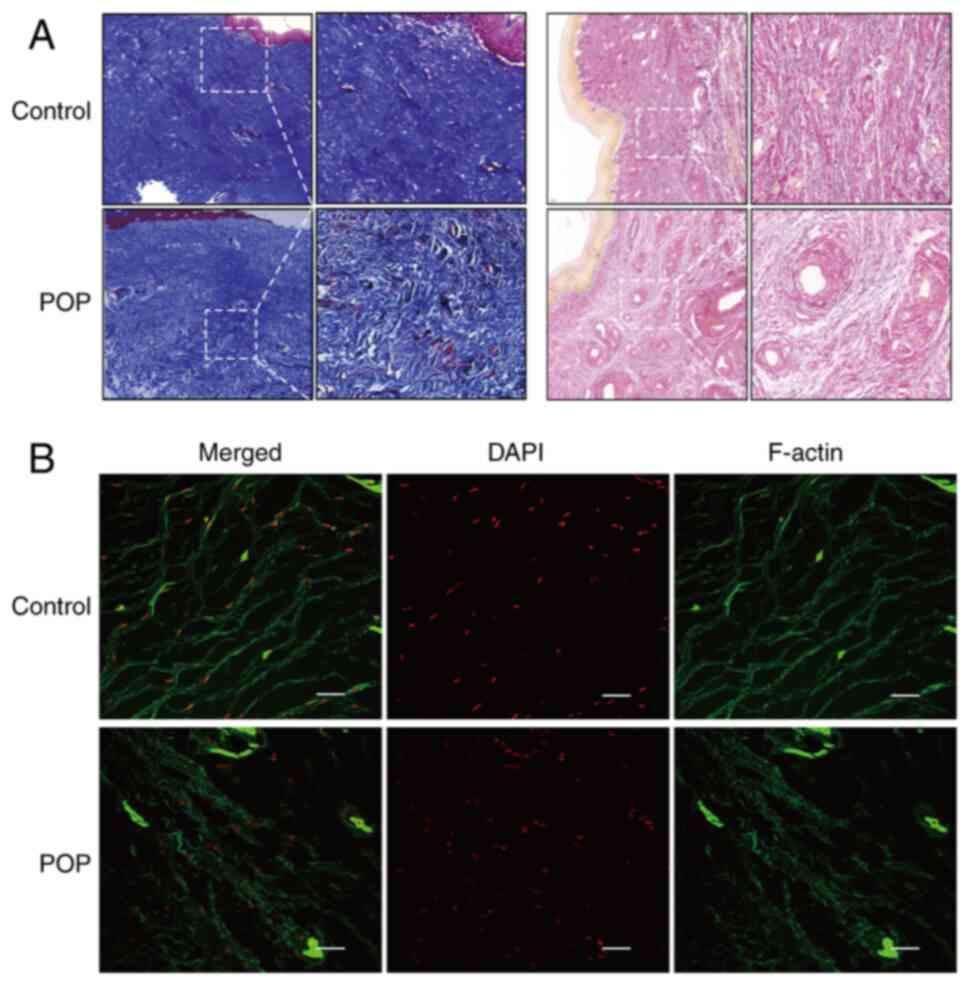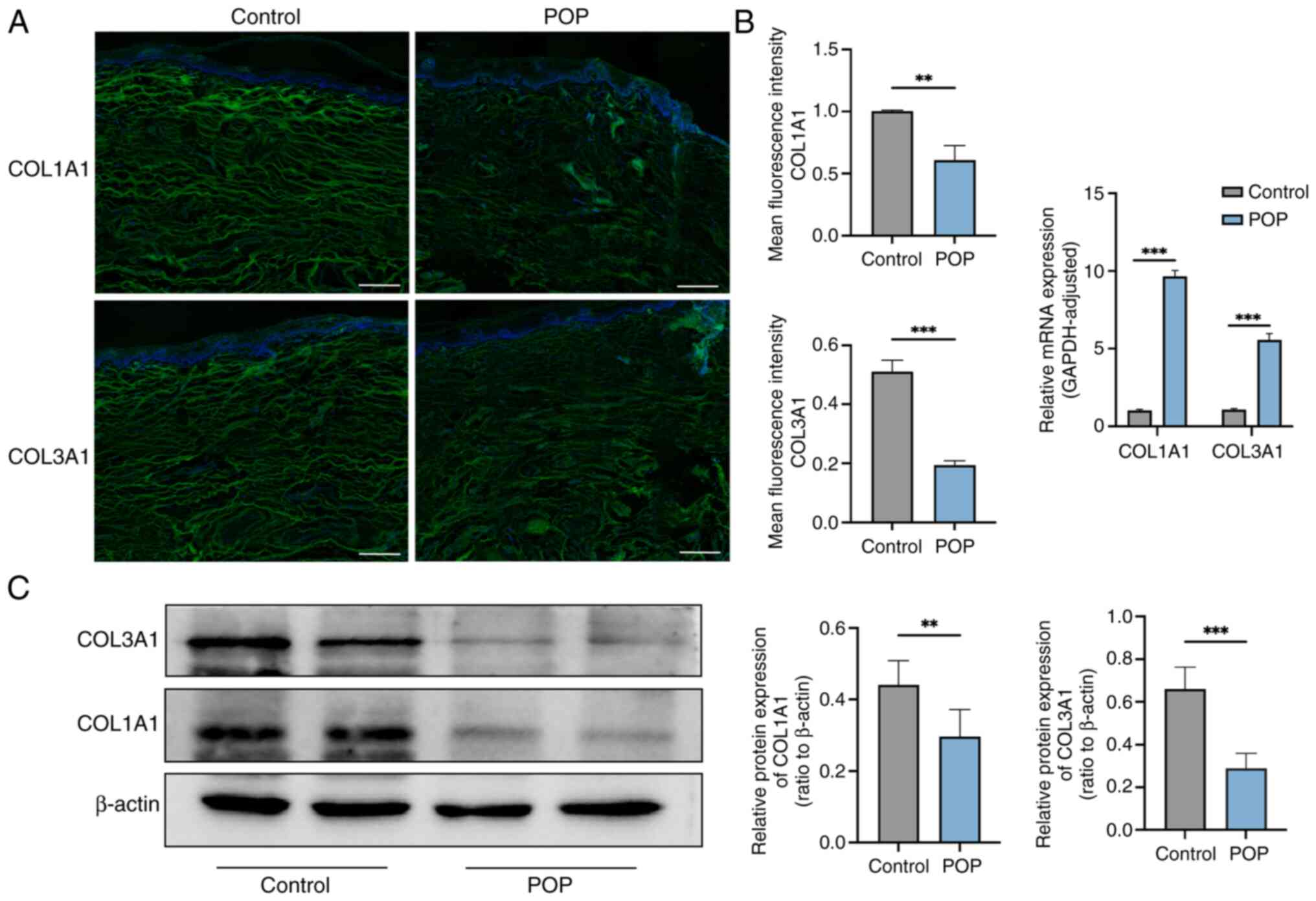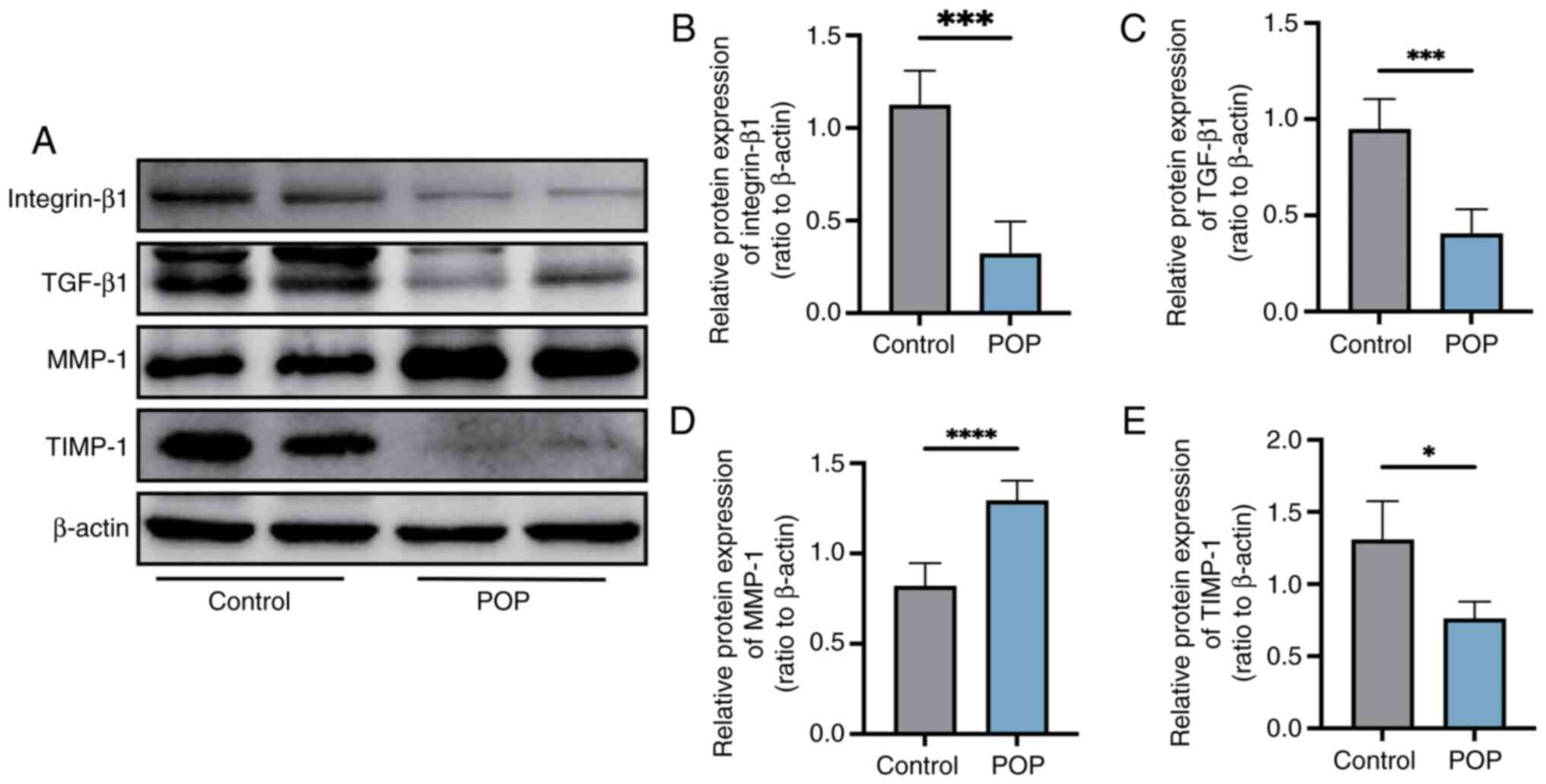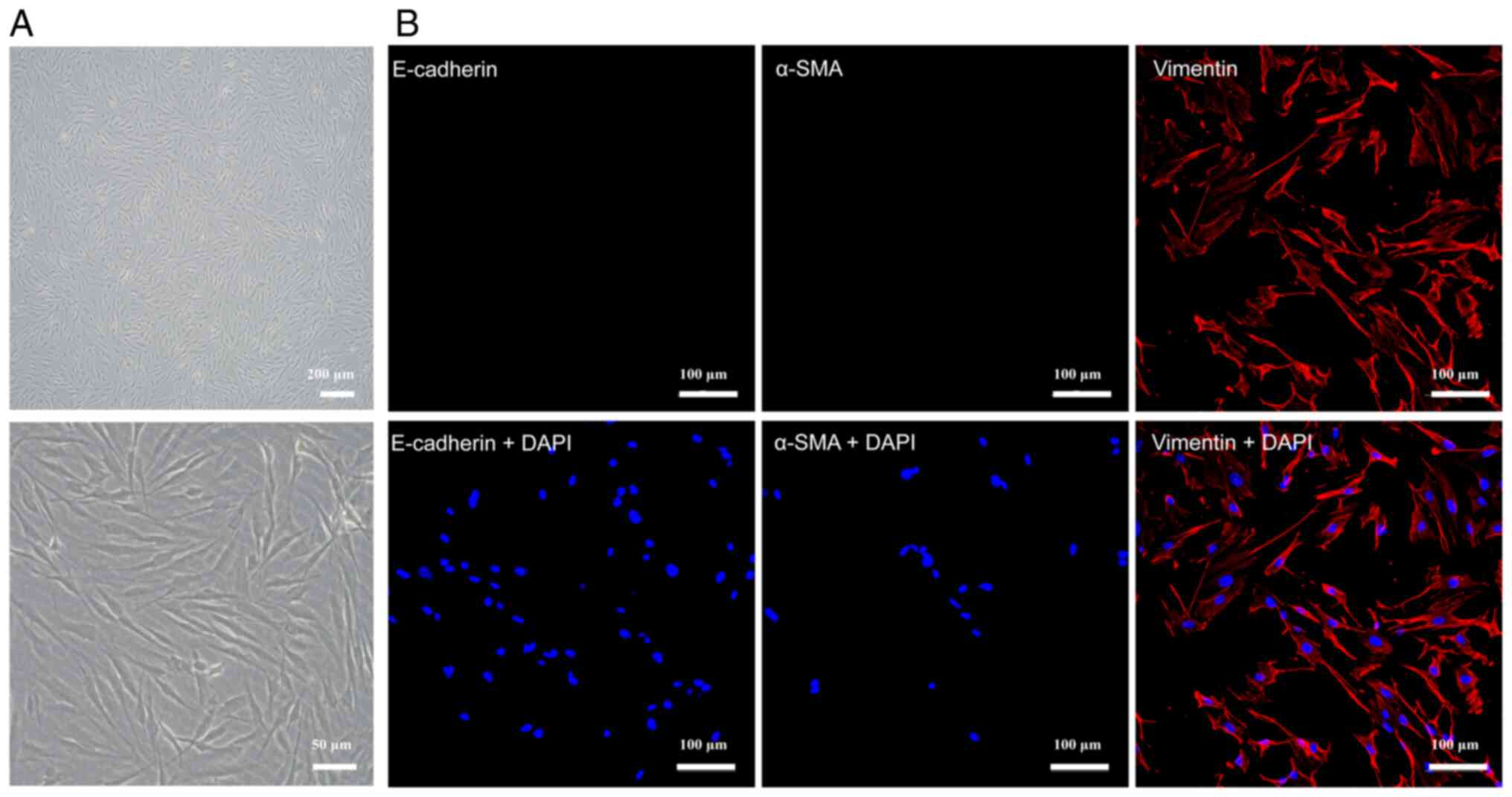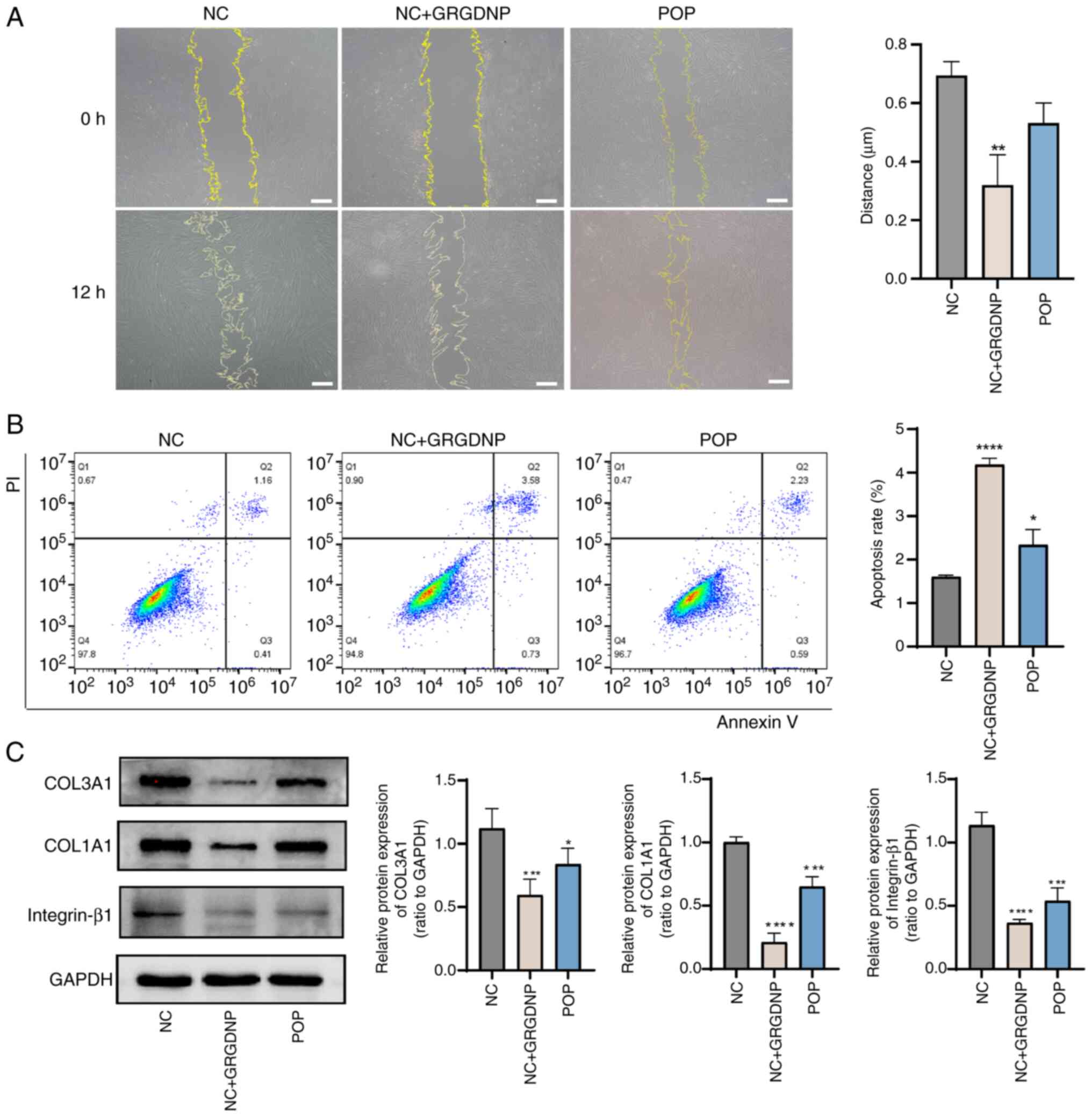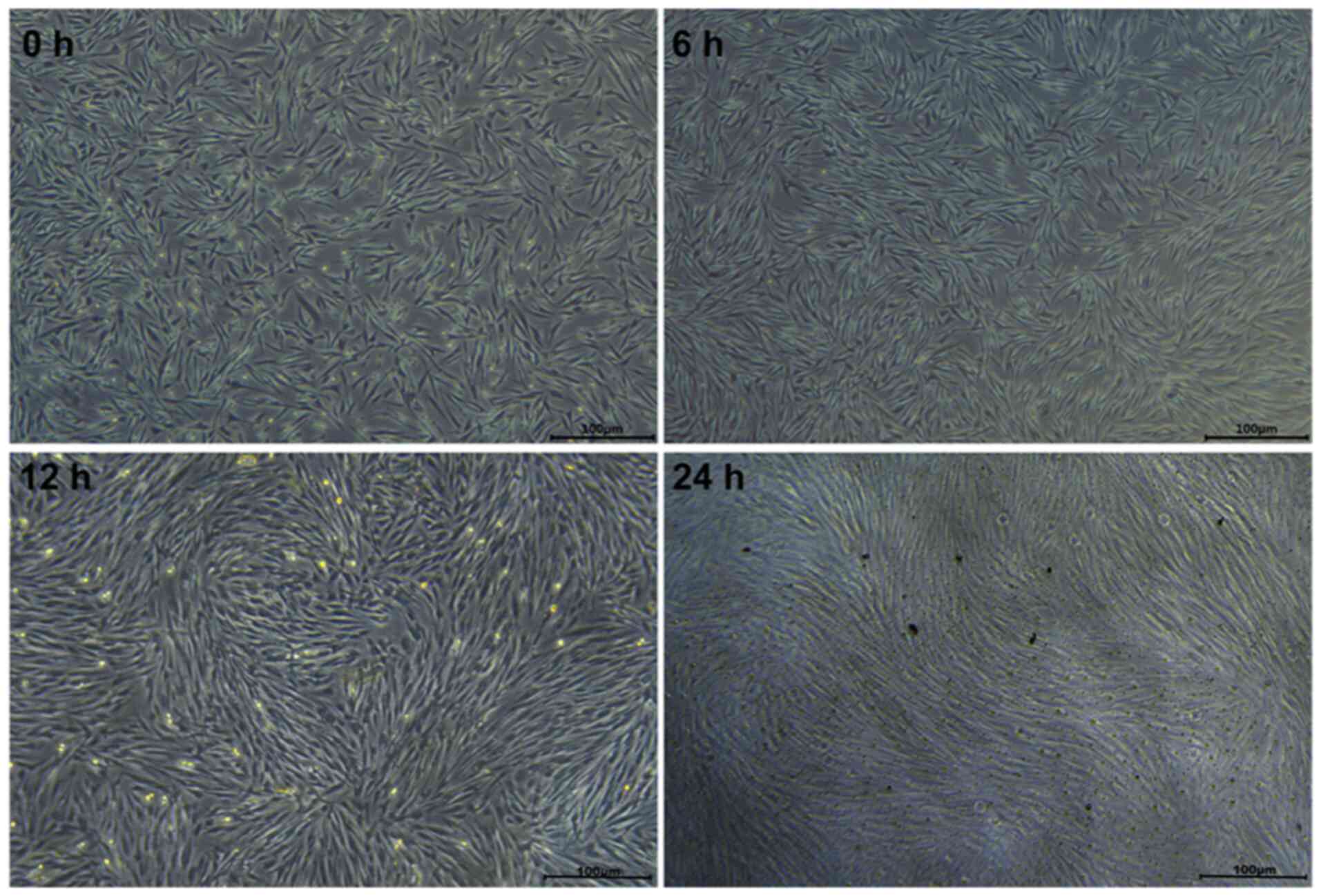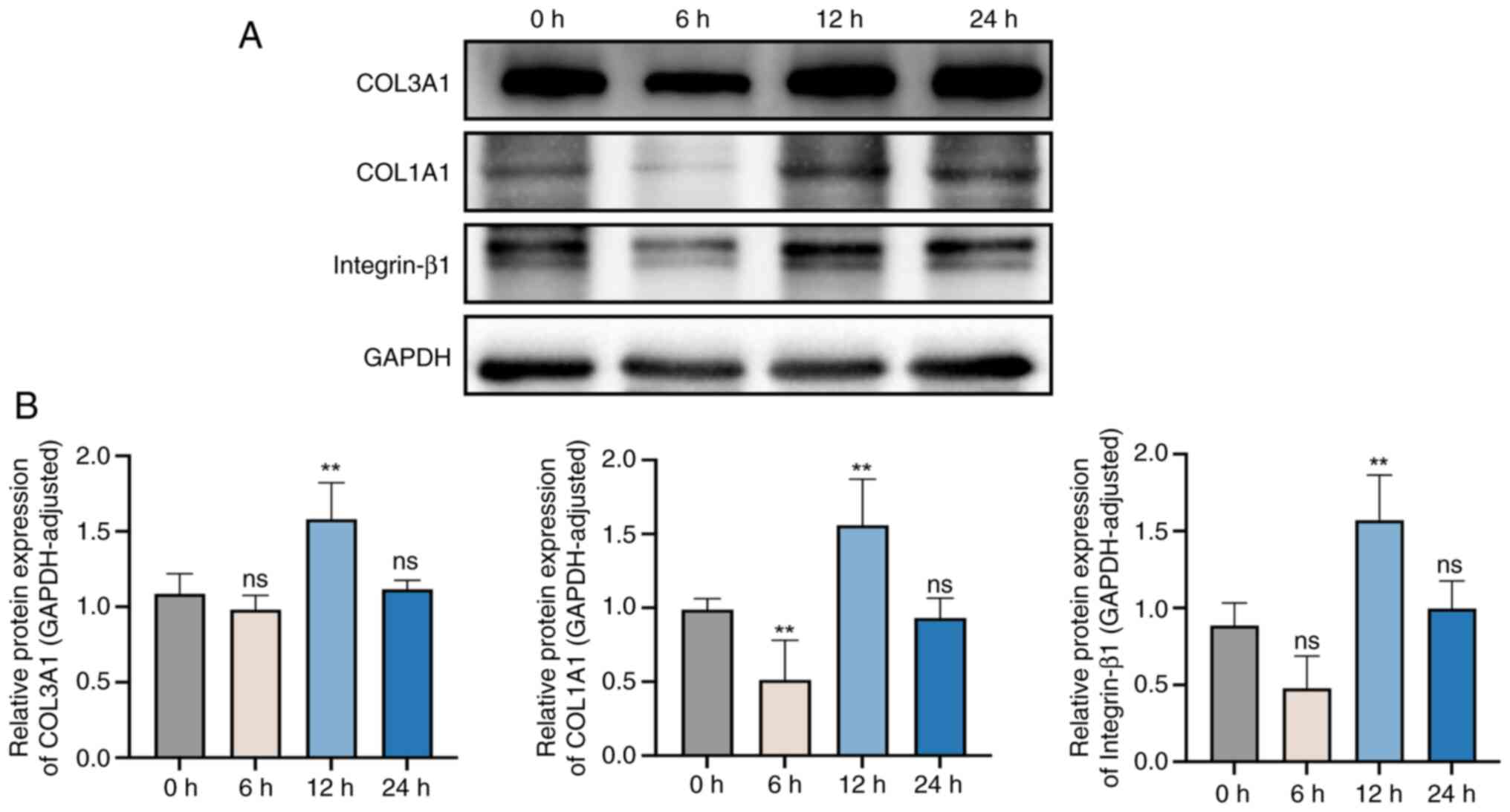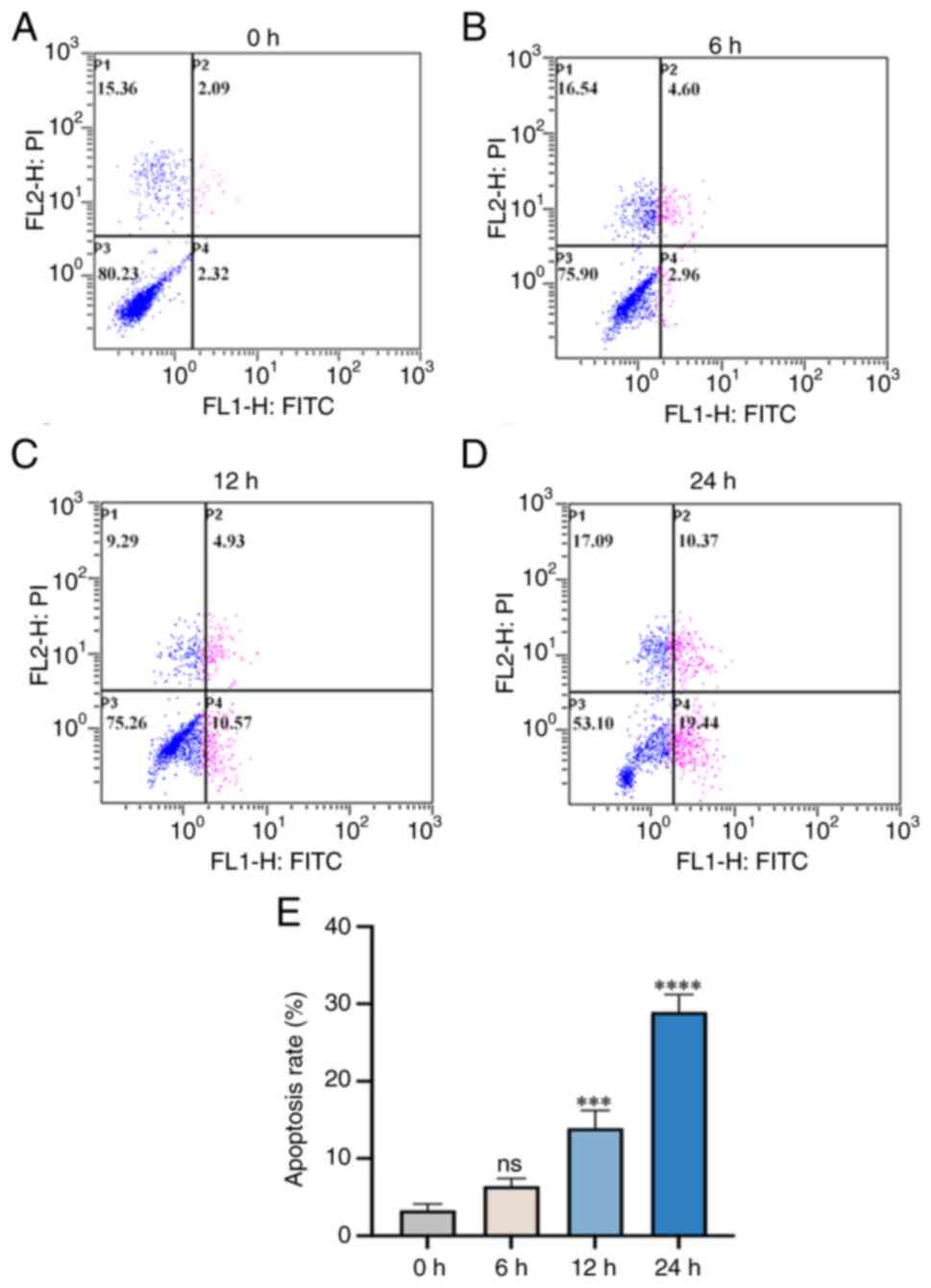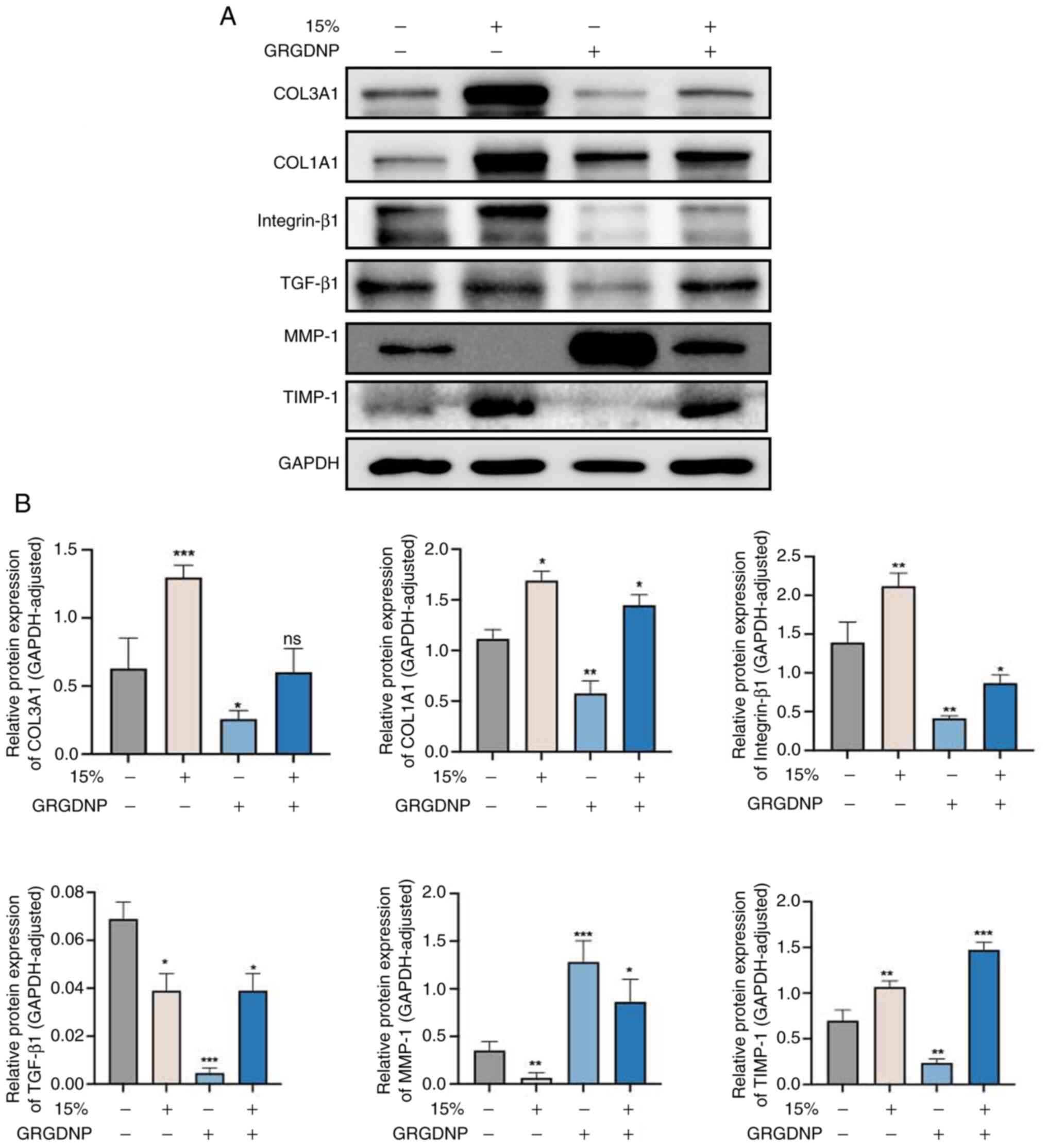|
1
|
Weintraub AY, Glinter H and Marcus-Braun
N: Narrative review of the epidemiology, diagnosis and
pathophysiology of pelvic organ prolapse. Int Braz J Urol. 46:5–14.
2020. View Article : Google Scholar : PubMed/NCBI
|
|
2
|
Buchsbaum GM, Duecy EE, Kerr LA, Huang LS,
Perevich M and Guzick DS: Pelvic organ prolapse in nulliparous
women and their parous sisters. Obstet Gynecol. 108:1388–1393.
2006. View Article : Google Scholar : PubMed/NCBI
|
|
3
|
Jelovsek JE, Maher C and Barber MD: Pelvic
organ prolapse. Lancet. 369:1027–1038. 2007. View Article : Google Scholar : PubMed/NCBI
|
|
4
|
Iglesia CB and Smithling KR: Pelvic organ
prolapse. Am Fam Physician. 96:179–185. 2017.PubMed/NCBI
|
|
5
|
Friedman T, Eslick GD and Dietz HP: Risk
factors for prolapse recurrence: Systematic review and
meta-analysis. Int Urogynecol J. 29:13–21. 2018. View Article : Google Scholar : PubMed/NCBI
|
|
6
|
Altman D, Zetterstrom J, Schultz I,
Nordenstam J, Hjern F, Lopez A and Mellgren A: Pelvic organ
prolapse and urinary incontinence in women with surgically managed
rectal prolapse: A population-based case-control study. Dis Colon
Rectum. 49:28–35. 2006. View Article : Google Scholar : PubMed/NCBI
|
|
7
|
Slieker-ten Hove MC, Pool-Goudzwaard AL,
Eijkemans MJ, Steegers-Theunissen RP, Burger CW and Vierhout ME:
The prevalence of pelvic organ prolapse symptoms and signs and
their relation with bladder and bowel disorders in a general female
population. Int Urogynecol J Pelvic Floor Dysfunct. 20:1037–1045.
2009. View Article : Google Scholar : PubMed/NCBI
|
|
8
|
Pang H, Zhang L, Han S, Li Z, Gong J, Liu
Q, Liu X, Wang J, Xia Z, Lang J, et al: A nationwide
population-based survey on the prevalence and risk factors of
symptomatic pelvic organ prolapse in adult women in China - A
pelvic organ prolapse quantification system-based study. BJOG.
128:1313–1323. 2021. View Article : Google Scholar : PubMed/NCBI
|
|
9
|
Smith FJ, Holman CD, Moorin RE and Tsokos
N: Lifetime risk of undergoing surgery for pelvic organ prolapse.
Obstet Gynecol. 116:1096–1100. 2010. View Article : Google Scholar : PubMed/NCBI
|
|
10
|
Wu JM, Matthews CA, Conover MM, Pate V and
Jonsson Funk M: Lifetime risk of stress urinary incontinence or
pelvic organ prolapse surgery. Obstet Gynecol. 123:1201–1206. 2014.
View Article : Google Scholar : PubMed/NCBI
|
|
11
|
Wu JM, Kawasaki A, Hundley AF, Dieter AA,
Myers ER and Sung VW: Predicting the number of women who will
undergo incontinence and prolapse surgery, 2010 to 2050. Am J
Obstet Gynecol. 205:230.e1–5. 2011. View Article : Google Scholar : PubMed/NCBI
|
|
12
|
Schulten SFM, Claas-Quax MJ, Weemhoff M,
van Eijndhoven HW, van Leijsen SA, Vergeldt TF, IntHout J and
Kluivers KB: Risk factors for primary pelvic organ prolapse and
prolapse recurrence: An updated systematic review and
meta-analysis. Am J Obstet Gynecol. 227:192–208. 2022. View Article : Google Scholar : PubMed/NCBI
|
|
13
|
Flusberg M, Kobi M, Bahrami S, Glanc P,
Palmer S, Chernyak V, Kanmaniraja D and El Sayed RF: Multimodality
imaging of pelvic floor anatomy. Abdom Radiol (NY). 46:1302–1311.
2021. View Article : Google Scholar : PubMed/NCBI
|
|
14
|
Ruiz-Zapata AM, Heinz A, Kerkhof MH, van
de Westerlo-van Rijt C, Schmelzer CEH, Stoop R, Kluivers KB and
Oosterwijk E: Extracellular matrix stiffness and composition
regulate the myofibroblast differentiation of vaginal fibroblasts.
Int J Mol Sci. 21:47622020. View Article : Google Scholar : PubMed/NCBI
|
|
15
|
Eckes B, Zweers MC, Zhang ZG, Hallinger R,
Mauch C, Aumailley M and Krieg T: Mechanical tension and integrin
alpha 2 beta 1 regulate fibroblast functions. J Investig Dermatol
Symp Proc. 11:66–72. 2006. View Article : Google Scholar : PubMed/NCBI
|
|
16
|
Becchetti A, Petroni G and Arcangeli A:
Ion channel conformations regulate integrin-dependent signaling.
Trends Cell Biol. 29:298–307. 2019. View Article : Google Scholar : PubMed/NCBI
|
|
17
|
Kolasangiani R, Bidone TC and Schwartz MA:
Integrin conformational dynamics and mechanotransduction. Cells.
11:35842022. View Article : Google Scholar : PubMed/NCBI
|
|
18
|
Galliher AJ and Schiemann WP: Beta3
integrin and Src facilitate transforming growth factor-beta
mediated induction of epithelial-mesenchymal transition in mammary
epithelial cells. Breast Cancer Res. 8:R422006. View Article : Google Scholar : PubMed/NCBI
|
|
19
|
Chen X, Wang H, Liao HJ, Hu W, Gewin L,
Mernaugh G, Zhang S, Zhang ZY, Vega-Montoto L, Vanacore RM, et al:
Integrin-mediated type II TGF-β receptor tyrosine dephosphorylation
controls SMAD-dependent profibrotic signaling. J Clin Invest.
124:3295–3310. 2014. View
Article : Google Scholar : PubMed/NCBI
|
|
20
|
Sarrazy V, Koehler A, Chow ML, Zimina E,
Li CX, Kato H, Caldarone CA and Hinz B: Integrins αvβ5 and αvβ3
promote latent TGF-β1 activation by human cardiac fibroblast
contraction. Cardiovasc Res. 102:407–417. 2014. View Article : Google Scholar : PubMed/NCBI
|
|
21
|
Perrucci GL, Barbagallo VA, Corlianò M,
Tosi D, Santoro R, Nigro P, Poggio P, Bulfamante G, Lombardi F and
Pompilio G: Integrin ανβ5 in vitro inhibition limits pro-fibrotic
response in cardiac fibroblasts of spontaneously hypertensive rats.
J Transl Med. 16:3522018. View Article : Google Scholar : PubMed/NCBI
|
|
22
|
Liu C, Wang Y, Li BS, Yang Q, Tang JM, Min
J, Hong SS, Guo WJ and Hong L: Role of transforming growth factor
β-1 in the pathogenesis of pelvic organ prolapse: A potential
therapeutic target. Int J Mol Med. 40:347–356. 2017. View Article : Google Scholar : PubMed/NCBI
|
|
23
|
Wang S, Zhang Z, Lü D and Xu Q: Effects of
mechanical stretching on the morphology and cytoskeleton of vaginal
fibroblasts from women with pelvic organ prolapse. Int J Mol Sci.
16:9406–9419. 2015. View Article : Google Scholar : PubMed/NCBI
|
|
24
|
Belayneh T, Gebeyehu A, Adefris M,
Rortveit G and Genet T: Validation of the amharic version of the
pelvic organ prolapse symptom score (POP-SS). Int Urogynecol J.
30:149–156. 2019. View Article : Google Scholar : PubMed/NCBI
|
|
25
|
Livak KJ and Schmittgen TD: Analysis of
relative gene expression data using real-time quantitative PCR and
the 2(−Delta Delta C(T)) method. Methods. 25:402–408. 2001.
View Article : Google Scholar : PubMed/NCBI
|
|
26
|
Boccafoschi F, Sabbatini M, Bosetti M and
Cannas M: Overstressed mechanical stretching activates survival and
apoptotic signals in fibroblasts. Cells Tissues Organs.
192:167–176. 2010. View Article : Google Scholar : PubMed/NCBI
|
|
27
|
Chen R, Dawson DW, Pan S, Ottenhof NA, de
Wilde RF, Wolfgang CL, May DH, Crispin DA, Lai LA, Lay AR, et al:
Proteins associated with pancreatic cancer survival in patients
with resectable pancreatic ductal adenocarcinoma. Lab Invest.
95:43–55. 2015. View Article : Google Scholar : PubMed/NCBI
|
|
28
|
Landén NX, Li D and Ståhle M: Transition
from inflammation to proliferation: A critical step during wound
healing. Cell Mol Life Sci. 73:3861–3885. 2016. View Article : Google Scholar : PubMed/NCBI
|
|
29
|
Collins S and Lewicky-Gaupp C: Pelvic
organ prolapse. Gastroenterol Clin North Am. 51:177–193. 2022.
View Article : Google Scholar : PubMed/NCBI
|
|
30
|
Ying W, Hu Y and Zhu H: Expression of
CD44, transforming growth factor-β, and matrix metalloproteinases
in women with pelvic organ prolapse. Front Surg. 9:9028712022.
View Article : Google Scholar : PubMed/NCBI
|
|
31
|
Babinski M, Pires LAS, Fonseca Junior A,
Manaia JHM and Babinski MA: Fibrous components of extracellular
matrix and smooth muscle of the vaginal wall in young and
postmenopausal women: Stereological analysis. Tissue Cell.
74:1016822022. View Article : Google Scholar : PubMed/NCBI
|
|
32
|
Alperin M and Moalli PA: Remodeling of
vaginal connective tissue in patients with prolapse. Curr Opin
Obstet Gynecol. 18:544–550. 2006. View Article : Google Scholar : PubMed/NCBI
|
|
33
|
Tian Z, Li Q, Wang X and Sun Z: The
difference in extracellular matrix metabolism in women with and
without pelvic organ prolapse: A systematic review and
meta-analysis. BJOG. 131:1029–1041. 2024. View Article : Google Scholar : PubMed/NCBI
|
|
34
|
Tola EN, Koroglu N, Yıldırım GY and Koca
HB: The role of ADAMTS-2, collagen type-1, TIMP-3 and papilin
levels of uterosacral and cardinal ligaments in the
etiopathogenesis of pelvic organ prolapse among women without
stress urinary incontinence. Eur J Obstet Gynecol Reprod Biol.
231:158–163. 2018. View Article : Google Scholar : PubMed/NCBI
|
|
35
|
Chen B and Yeh J: Alterations in
connective tissue metabolism in stress incontinence and prolapse. J
Urol. 186:1768–1772. 2011. View Article : Google Scholar : PubMed/NCBI
|
|
36
|
Gedefaw G and Demis A: Burden of pelvic
organ prolapse in Ethiopia: A systematic review and meta-analysis.
BMC Womens Health. 20:1662020. View Article : Google Scholar : PubMed/NCBI
|
|
37
|
Zeng W, Li Y, Li B, Liu C, Hong S, Tang J
and Hong L: Mechanical stretching induces the apoptosis of
parametrial ligament fibroblasts via the actin cytoskeleton/Nr4a1
signalling pathway. Int J Med Sci. 17:1491–1498. 2020. View Article : Google Scholar : PubMed/NCBI
|
|
38
|
Huntington A, Donaldson K and De Vita R:
Contractile properties of vaginal tissue. J Biomech Eng.
142:0808012020. View Article : Google Scholar : PubMed/NCBI
|
|
39
|
Khomtchouk BB, Lee YS, Khan ML, Sun P,
Mero D and Davidson MH: Targeting the cytoskeleton and
extracellular matrix in cardiovascular disease drug discovery.
Expert Opin Drug Discov. 17:443–460. 2022. View Article : Google Scholar : PubMed/NCBI
|
|
40
|
Li X and Wang J: Mechanical tumor
microenvironment and transduction: Cytoskeleton mediates cancer
cell invasion and metastasis. Int J Biol Sci. 16:2014–2028. 2020.
View Article : Google Scholar : PubMed/NCBI
|
|
41
|
Carlin GL, Bodner K, Kimberger O,
Haslinger P, Schneeberger C, Horvat R, Kölbl H, Umek W and
Bodner-Adler B: The role of transforming growth factor-β (TGF-β1)
in postmenopausal women with pelvic organ prolapse: An
immunohistochemical study. Eur J Obstet Gynecol Reprod Biol X.
7:1001112020. View Article : Google Scholar : PubMed/NCBI
|
|
42
|
Cheng Q, Li C, Yang CF, Zhong YJ, Wu D,
Shi L, Chen L, Li YW and Li L: Methyl ferulic acid attenuates liver
fibrosis and hepatic stellate cell activation through the
TGF-β1/Smad and NOX4/ROS pathways. Chem Biol Interact. 299:131–139.
2019. View Article : Google Scholar : PubMed/NCBI
|
|
43
|
Madison J, Wilhelm K, Meehan DT, Delimont
D, Samuelson G and Cosgrove D: Glomerular basement membrane
deposition of collagen α1(III) in Alport glomeruli by mesangial
filopodia injures podocytes via aberrant signaling through DDR1 and
integrin α2β1. J Pathol. 258:26–37. 2022. View Article : Google Scholar : PubMed/NCBI
|
|
44
|
Zou GL, Zuo S, Lu S, Hu RH, Lu YY, Yang J,
Deng KS, Wu YT, Mu M, Zhu JJ, et al: Bone morphogenetic protein-7
represses hepatic stellate cell activation and liver fibrosis via
regulation of TGF-β/Smad signaling pathway. World J Gastroenterol.
25:4222–4234. 2019. View Article : Google Scholar : PubMed/NCBI
|
|
45
|
Sferra R, Pompili S, D'Alfonso A, Sabetta
G, Gaudio E, Carta G, Festuccia C, Colapietro A and Vetuschi A:
Neurovascular alterations of muscularis propria in the human
anterior vaginal wall in pelvic organ prolapse. J Anat.
235:281–288. 2019. View Article : Google Scholar : PubMed/NCBI
|
|
46
|
Vetuschi A, D'Alfonso A, Sferra R, Zanelli
D, Pompili S, Patacchiola F, Gaudio E and Carta G: Changes in
muscularis propria of anterior vaginal wall in women with pelvic
organ prolapse. Eur J Histochem. 60:26042016. View Article : Google Scholar : PubMed/NCBI
|
|
47
|
De Landsheere L, Munaut C, Nusgens B,
Maillard C, Rubod C, Nisolle M, Cosson M and Foidart JM: Histology
of the vaginal wall in women with pelvic organ prolapse: A
literature review. Int Urogynecol J. 24:2011–2020. 2013. View Article : Google Scholar : PubMed/NCBI
|
|
48
|
Montoya TI, Maldonado PA, Acevedo JF and
Word RA: Effect of vaginal or systemic estrogen on dynamics of
collagen assembly in the rat vaginal wall. Biol Reprod. 92:432015.
View Article : Google Scholar : PubMed/NCBI
|
|
49
|
Zhu Y, Li L, Xie T, Guo T, Zhu L and Sun
Z: Mechanical stress influences the morphology and function of
human uterosacral ligament fibroblasts and activates the p38 MAPK
pathway. Int Urogynecol J. 33:2203–2212. 2022. View Article : Google Scholar : PubMed/NCBI
|
|
50
|
Saatli B, Kizildag S, Cagliyan E, Dogan E
and Saygili U: Alteration of apoptosis-related genes in
postmenopausal women with uterine prolapse. Int Urogynecol J.
25:971–977. 2014. View Article : Google Scholar : PubMed/NCBI
|



